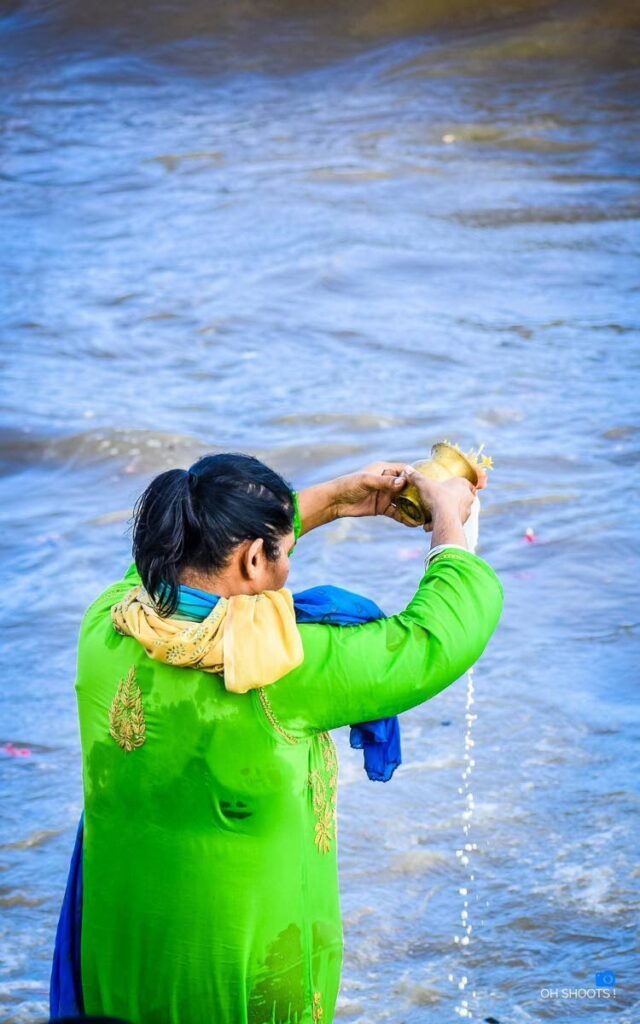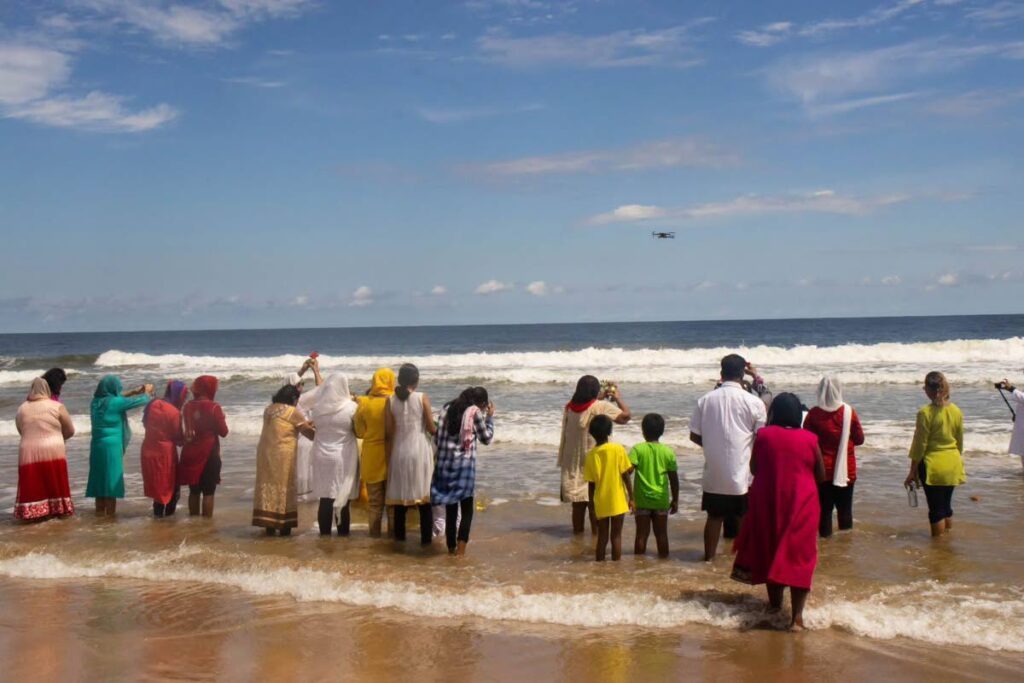Hindus celebrate Kartik Snaan

BAVINA SOOKDEO
THE Hindu community is currently celebrating Kartik Snaan, a significant ritual bath held during the sacred lunar month of Kartik (October–November). Considered to be one of the holiest months in the Hindu calendar, Kartik takes place in alignment with the full moon.
Spiritual leader of the Couva Mandir, Shiva Baran, who has been a pundit for the past 20 years, explained, “The last day of the month is the purnima or full moon and is thought to be of special significance. Many organisations and mandirs assemble at major watercourses to perform puja (Hindu prayer ceremony) on this day.”
While this year the event will be held on November 15, Baran pointed out that, “If the final day occurs during the week (as it does this year), in order for the maximum number of devotees to benefit, many mandirs perform their pujas and baths on the weekend prior to the full moon. The Couva Mandir held its observances on November 10 at the Clifton Hill Beach.” The sacred bath will be done by other mandirs on Friday.

Baran, a graduate of the University of London, bachelor of laws programme, points out that the month of Kartic contains important festivals such as Divali (the festival of lights), Govardhan Puja (worship of the mountain Govardhan) and Tulsi Vivah (which celebrates the marriage of Tulsi, or the holy basil plant, to Shaligram, a black stone considered a form of Lord Vishnu).
“The sacred bath, typically performed in rivers, seas, or oceans, is believed to cleanse and rejuvenate the devotee. It is seen as a purification ritual that not only cleanses the body but also serves as a spiritual renewal. It’s not just about physical cleanliness, the bath represents a spiritual cleansing – washing away negative tendencies and reaffirming one’s faith.”
The ritual has profound roots in Hindu mythology. The pundit explained that it is stated in the Shiva Puran (Hindu scripture) that this day is the commemoration of the destruction of the demon Tripurasura by Lord Shiva (God of destruction in Hindu mythology).

“Ganga Ma (goddess of the water) also flows from the hair of Lord Shiva” he said “and the Matsya Puran (Hindu text) describes the protection of the Vedas (holy texts) by the Matsya avatar (fish form) of Lord Vishnu (the preserver of the universe) who emerges on the Kartik Purnima (the full moon for the month of Kartik).
Tulsi Ma (Hindu goddess believed to reside in the holy basil) is said to have been born during the month of Kartik and she is venerated as a symbol of piety, dedication and healing.”
Kartik observances begins with a puja often dedicated to Lord Shiva, Lord Vishnu, Tulsi Ma, Ganga Ma, and sometimes Lord Kartikeya, after whom the month is named. Devotees gather at the sea, rivers, or other water bodies, where they sing bhajans and kirtans (devotional songs), chant mantras, and perform havan (fire offerings).
“Thereafter, devotees plant jhandis (flags) usually in honour of Satyanarayan Swami (a form of Lord Vishnu) and Ganga Ma. They then proceed to the water to offer dhaar (a mixture of milk and other items), flowers and fruits while praying for peace, prosperity and protection” Baran said.
After offering their prayers, the devotees take the sacred bath. “The waters are believed to have a connection with the holy Ganga in India,” said the pundit.
Over the years, Kartik Snaan has become a more widely celebrated event across the country. Baran noted that it has expanded to various beaches, including Manzanilla, Mayaro, and Guapo, as well as rivers such as Aripo.
“People now observe the ritual at a variety of locations. Some prefer a rustic experience under a tent by the water, while others opt for more modern accommodations, such as beach houses.”

Questioned on the relevance of Kartik Snaan in the modern world, the pundit explained, “It is relevant to us today for several reasons. It serves as a connection to our cultural past both locally and from India. It is also a reminder of the significance of a return to simplicity and the appreciation of the natural environment. In these days where climate change and environmental protection headline the global conversation, Kartik provides an opportunity to show reverence to the waters, the land and the flora and fauna.”
For those unable to attend the public celebrations, Baran offers a simple way to observe Kartik Snaan at home. “If persons are unable to attend the observances, they can do a basic
puja to Ganga Ma's murti (clay model or picture)” he noted. “She is usually depicted riding on a crocodile-like creature. They can then pay homage (bow) to the water and have a bath.”
Kartik Snaan is a deeply meaningful ritual that connects Hindus to their heritage, their faith, and their natural environment. Whether celebrated at a river or beach, or observed quietly at home, the pundit reiterated that it is an opportunity for renewal, reflection, strengthening of faith, and honouring the world around us.

Comments
"Hindus celebrate Kartik Snaan"